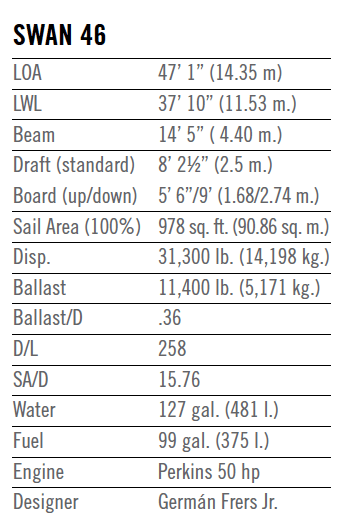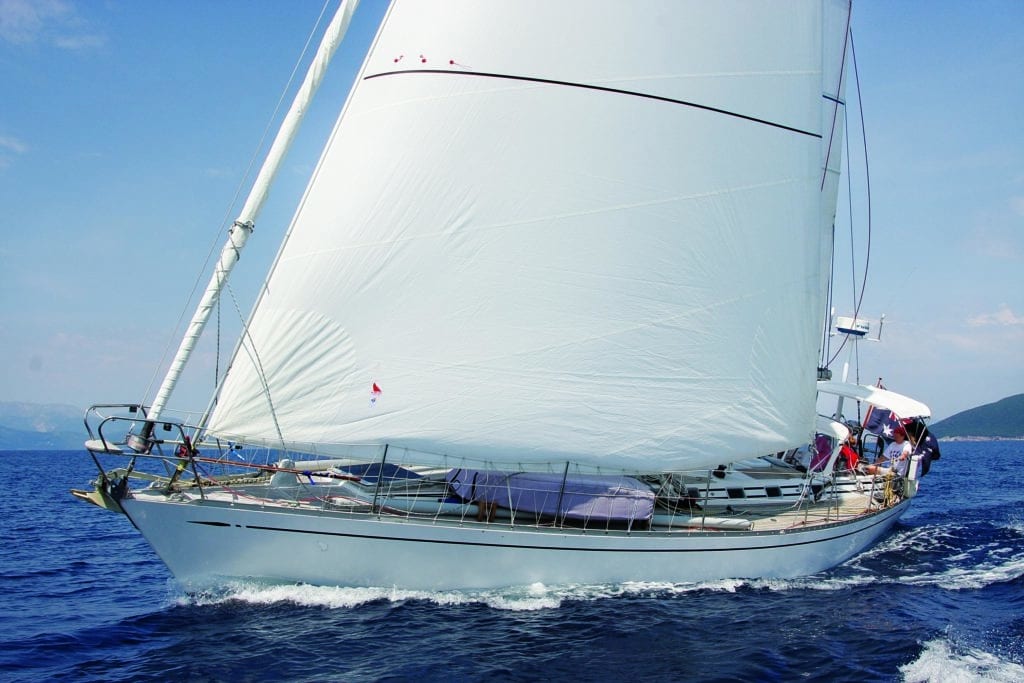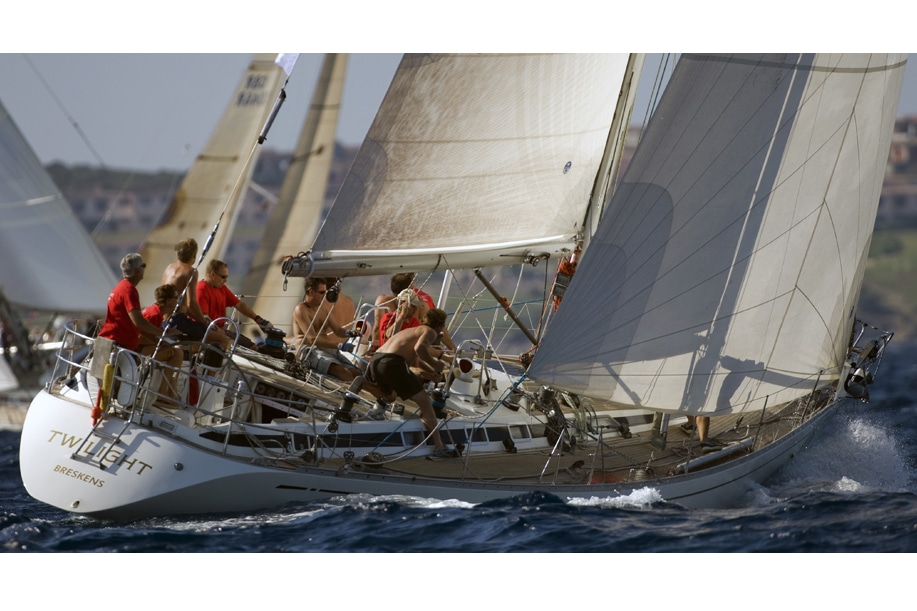For 50 years, Finland’s Nautor has had an unequalled reputation for building high-quality, high-performance sailboats under the Swan label. The company’s modus operandi has been to build boats for people who will pay for the very best, whatever the cost. It sources equipment from all over the world, and if parts that meet its standards cannot be obtained elsewhere, it makes its own.
The Swan 46, designed by Germán Frers Jr. and introduced in 1983, was one of Nautor’s most successful models. As a cruiser/racer, it made a name for itself in many Swan Cup regattas.
My husband, John, and I met at the Swan Cup in Sardinia. Since we were both former Swan owners, we could not really buy anything else. We bought our Swan 46, Senta, in Maine in 2006, and have since sailed her across the Atlantic, around the Mediterranean, back across the Atlantic and all the way to Australia. She was built for cruising and has a centerboard keel, which means we seldom have to worry about water depth.
Senta is a fine ocean passagemaker. She sets beautifully into steep waves while the cabin remains a quiet haven, and with fingertip control, she steers like a dream. In our 2012 ARC Atlantic crossing, in perfect conditions, she charged across the Pond in an impressive 16 days to take the award for the fastest family boat.
The aft cockpit is small for entertaining — two people can sit on either side and two behind the wheel — but, unlike her racing sister ships, Senta has no primary winches in the center cockpit, making that a good place for sunbathers and non-sailors. She is also one of just a handful of Swan 46s to have an entry hatch from the aft cockpit. It’s much safer to use in a seaway than the standard Swan center companionway, as we don’t have to clamber over the mainsheet traveler and the exposed bridgedeck to get to and from the cockpit.
Interior layouts vary a little. While the more common aft-cabin arrangement has a centerline double berth, Senta’s has a double and a large single. A pilot berth, a Pullman double, a single in the saloon, and an off-center double forward (where many boats are fitted with pipe cots) allow nine crew to sleep comfortably. Two spacious heads, one forward and one aft; the galley in the passageway to port; and a navigator’s desk to starboard complete the accommodations. Lustrous teak furniture and slatted overheads create a warm and cozy atmosphere.

On older Swans, Nautor had a policy of a winch for every line, so Senta has 14 winches on deck. Most are needed only when racing, and we use the winches around the aft cockpit when cruising. An electric winch fitted later can be used for reefing lines, headsail furlers, the mainsheet and, with some improvisation, the main halyard. Senta has a second forestay fitted close inside the first. Furlers on both allow quick sail changes without anybody being on the foredeck.
Among the technical features that highlight the outstanding build quality of the boat are the seven individually valved stainless-steel water tanks and the electrical wiring that’s meticulously labeled and cross-referenced to factory diagrams. The anodized-aluminum toerails are through-bolted, and from the bow rollers to the pushpit, beautiful stainless-steel work is everywhere.
From 1983 to 1989, Nautor built 81 hulls, and an MK II version, built from 1989 to 1997, brought the total to 109. The changes found in the MK II model are a deeper keel, an elliptical rudder, an additional bunk-bed cabin to starboard, more open seating in the saloon, and an aft head accessible from two sides.
Karen Eriksen and her husband, John Cole, have sailed Senta halfway around the world to Sydney, Australia, and plan on sailing to Asia.










